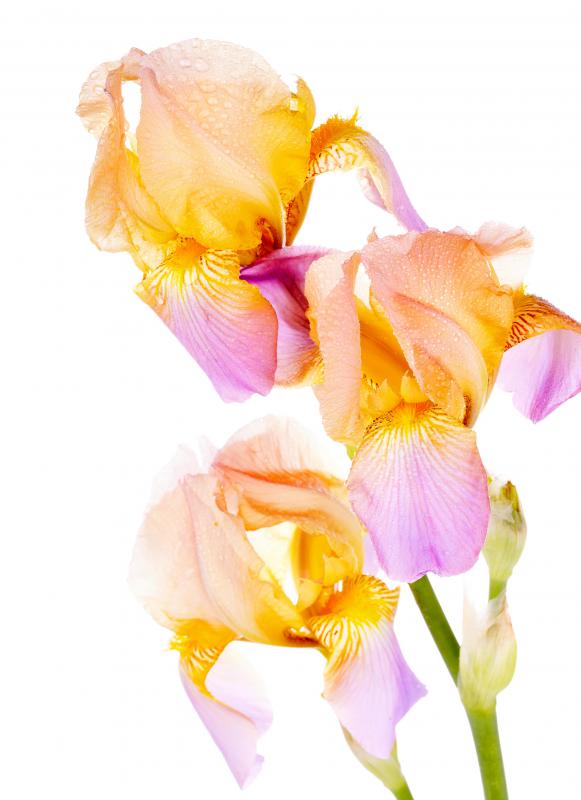At WiseGEEK, we're committed to delivering accurate, trustworthy information. Our expert-authored content is rigorously fact-checked and sourced from credible authorities. Discover how we uphold the highest standards in providing you with reliable knowledge.
What is an English Iris?
The English iris is a perennial garden flower. Like other members of the iris family, it is a beautiful addition to flower beds or borders. Irises are native to the northern temperate zones, but they can be grown in a variety of climates with the proper care.
Despite its name, the English iris is actually native to the Pyrenees region of Spain and France. The flowers acquired the English iris misnomer from Dutch growers, who first received the plants from British traders and thus assumed that they were of English origin. Scientifically, it is usually classified as Iris latifolia, but Iris xiphioides and Iris anglica are sometimes used to refer to the same species.

The English iris is a bulbous iris, or one that grows from a bulb rather than having a branching root system. These plants are indigenous to dryer climates than are the rhizomatous irises. Irises are perennial herbs, which mean that they may freeze to the ground in colder climates, but will regrow from the roots in the spring.
English irises can grow up to about 2 feet (61 centimeters) tall. They have long stems, with a single stem per flower. The leaves are typically long, narrow, and blueish-green in color.

Most English irises produce one or two flowers per plant, and flower for a few weeks in spring. The color of the flowers can be many shades of blue and purple, and occasionally white. Irises have three inner petals and three outer petals. In gardening terminology, the inner petals are sometimes called standards and the outer petals are called falls.
An iris' falls are technically actually sepals rather than petals. Sepals are the part of a plant that protects the flower bud before it blooms. In most flowers they are green and lie under the petals after the flower blooms, but in irises the sepals are the same color as the petals and make up part of the bloom.
The English iris is hardy down to 0°F (-17.7°C) and can survive even colder temperatures if it is well-mulched. The flowers need full sun or part shade, and require frequent watering so that the soil does not dry out. They prefer soils that have a pH ranging from slightly acidic to slightly alkaline.
In some parts of North America, the larva of a moth known as the iris borer can be a serious pest for these plants. It is generally a problem only in northern areas, such as those between and north of Iowa to Washington, D.C. Iris borers are seldom a problem where winter temperatures rarely or never drop below 10°F (-12.2°C).
AS FEATURED ON:
AS FEATURED ON:












Discuss this Article
Post your comments